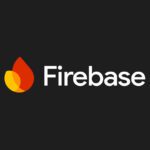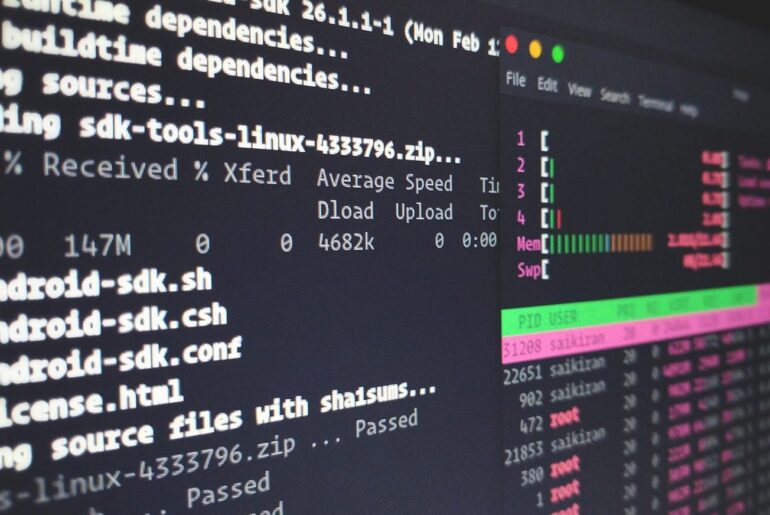Most small teams begin with a web app, an API, and a database, then add monitoring, backups, and a place to park files. You can run this on a general-purpose virtual machine (VM) or move pieces to managed services as you grow. Before we compare platforms, make sure you have a DigitalOcean account set up so you can price and test along the way. The goal here is to show what you actually pay for—and how it feels to run day-to-day—so you can choose once and move forward with confidence.
What we’re comparing
We’ll look at one realistic baseline stack—a 2 vCPU / 4 GiB app VM, a small managed PostgreSQL database, and 100–250 GiB of object storage, serving ~0.5–1.0 TB of monthly egress. That covers many early-stage SaaS, clinic tools, and internal dashboards. We’ll then touch on Kubernetes and “serverless PaaS” options, because those choices change cost curves and team workload. The final section distills the trade-offs into a simple decision path so you can decide and keep building.
Baseline compute: predictable on DigitalOcean, more knobs on Azure
DigitalOcean’s “Basic” Droplet at 4 GiB / 2 vCPU lists at $24/month and includes 4 TB of outbound transfer pooled across your droplets (overage $0.01/GB). That allowance alone often eliminates a separate CDN bill in the early months. Inbound transfer is free, and backup snapshots have simple add-on pricing.
Azure exposes many VM families (burstable B-series for dev/test up through D/E series for production) with per-second pricing and discounts for reserved or spot capacity. Baseline internet egress on Azure includes 100 GB/month free; beyond that, North America/Europe egress is ~$0.087/GB for the first 10 TB on the premium network. This flexibility is powerful at scale, but that egress meter becomes the dominant line item for small apps with media or API traffic.
Implication: if your workload pushes hundreds of gigabytes out each month, DigitalOcean’s bundled transfer materially lowers the all-in bill. If you need niche VM types, hybrid networking, or reserved/spot arbitrage, Azure’s catalog pays off.
Databases: simple tiers vs granular dials
DigitalOcean Managed PostgreSQL has entry tiers starting at $15/month (single-node dev/test) and $30/month for HA clusters; storage scales in fixed increments, with built-in backups and PITR. Pricing is transparent and easy to forecast.
Azure Database for PostgreSQL (Flexible Server) offers Burstable, General Purpose, and Memory-Optimized tiers with separately metered vCores, storage, and IOPS, plus 1–3 year reserved capacity options for savings. It’s highly tunable and integrates with Azure networking and security controls but takes longer to right-size.
Implication: pick DigitalOcean when you want a fixed monthly number and sensible defaults; pick Azure when you need fine-grained knobs, reserved pricing, or regional compliance anchors out of the gate.
Object storage and CDN: bundled vs à la carte
A DigitalOcean Spaces subscription is $5/month and includes 250 GiB storage + 1 TB egress, then $0.02/GB storage and $0.01/GB transfer beyond that. It’s S3-compatible and straightforward to budget.
Azure Blob Storage has tiered per-GB storage and separate egress; for most small teams, the egress line (again, 100 GB/month free, then ~$0.087/GB in EU/NA) is what matters. If you front with Azure CDN, it’s another per-GB table (cheaper than raw egress, but still metered).
Implication: DigitalOcean’s fixed Spaces bundle reduces surprise bills for static assets; Azure gives you more tiers, regions, and CDN choices when you need them.
Worked examples: what you likely pay
To keep it apples-to-apples, assume one web/API VM (2 vCPU/4 GiB), a small production Postgres, 150 GiB of objects, and two traffic bands.
Case A — ~0.5 TB/month egress
- DigitalOcean: Droplet $24 + Managed PG (HA) $30 + Spaces $5 = $59/mo. Egress is fully covered by bundled allowances (4 TB from the droplet + 1 TB from Spaces). Overage: $0.01/GB if you exceed pooled transfer.
- Azure: VM price varies by SKU/region; the egress after the first 100 GB adds ~$35 for the remaining ~400 GB at $0.087/GB. Add Azure Database for PostgreSQL (small GP tier) and Blob storage (Hot/Cool) according to your region. Even with a modest VM, the network line often dominates at this traffic level.
Case B — ~1.0 TB/month egress
- DigitalOcean: Same $59/mo for the stack; transfer still lands inside bundled allowances. If you burst past the pool, budget $10 per additional TB.
- Azure: ~$78 purely for egress beyond the free 100 GB (≈900 GB × $0.087), plus VM, DB, and storage. If you place a CDN, its price ladder applies instead of raw egress but remains metered.
Takeaway: Below ~1 TB/month, DigitalOcean’s included transfer keeps totals low and predictable. On Azure, network metering becomes the primary driver unless traffic is tiny, private, or mostly intra-Azure.
Kubernetes: the control-plane bill you won’t see on DO
DigitalOcean Kubernetes (DOKS) doesn’t charge for the control plane; you pay for worker nodes and storage, with an optional HA control plane at $40/month. This keeps small clusters affordable and easy to reason about.
Azure Kubernetes Service (AKS) offers multiple tiers. The Free tier avoids control-plane fees; Standard/Premium add per-cluster hourly charges in exchange for SLA and long-term support options. You still pay for nodes, disks, load balancers, and egress either way.
Implication: if you want a tiny production cluster without a fixed control-plane tax, DOKS is simpler. If you need multi-AZ SLAs, multi-cluster governance, and Azure policy/identity at scale, AKS fits better.
PaaS options: App Platform vs App Service
DigitalOcean App Platform keeps pricing modular and, for legacy tiers, published bandwidth allowances per plan; static-only sites also carry a small free tier, with overage at $0.02/GB handled separately from Droplet bandwidth. It suits teams that want “git push → deploy” without learning Kubernetes.
Azure App Service offers Free/Basic/Premium plans with dedicated compute under a “plan” that can host multiple apps; pricing and limits depend on the plan family, with clear guidance on how billing works as you scale up/down. The operational feel is mature, with built-in staging slots, autoscale, and tight integration to the rest of Azure.
Implication: choose App Platform to stay inside the DO ecosystem with minimal knobs; choose App Service if you expect to add Azure Functions, Key Vault, Private Link, or enterprise auth without third-party pieces.
Usability and operations: living with each platform
Teams report that DigitalOcean’s UI, docs, and defaults favor speed: you can provision a Droplet, database, and Spaces in minutes, and the pooled bandwidth model reduces bill anxiety while you iterate. The trade-off is a smaller catalog: fewer VM families, fewer managed services, and fewer region/zone options than hyperscalers.
Azure is broader and deeper: identity and access management (Entra ID), networking (VNets, Private Link), policy, and cost controls are first-class. You can wire private endpoints for databases and storage, impose organization-wide policy, and mix reserved/spot capacity for savings. The learning curve is steeper, and you must watch the egress and per-feature meters to keep costs in check.
Minimal IaC to sanity-check pricing yourself
Terraform on DigitalOcean for a single Droplet:
provider "digitalocean" {
# export DIGITALOCEAN_TOKEN first
}
resource "digitalocean_droplet" "app" {
name = "app-1"
region = "fra1"
size = "s-2vcpu-4gb" # $24/mo includes 4 TB transfer
image = "ubuntu-22-04-x64"
backups = true
ipv6 = true
tags = ["small-team"]
}Terraform on Azure for a small Linux VM (B-series) with a public IP:
provider "azurerm" {
features {}
}
resource "azurerm_resource_group" "rg" {
name = "rg-small-team"
location = "westeurope"
}
resource "azurerm_virtual_network" "vnet" {
name = "vnet-small"
address_space = ["10.10.0.0/16"]
location = azurerm_resource_group.rg.location
resource_group_name = azurerm_resource_group.rg.name
}
resource "azurerm_subnet" "subnet" {
name = "default"
resource_group_name = azurerm_resource_group.rg.name
virtual_network_name = azurerm_virtual_network.vnet.name
address_prefixes = ["10.10.1.0/24"]
}
resource "azurerm_network_interface" "nic" {
name = "nic-app-1"
location = azurerm_resource_group.rg.location
resource_group_name = azurerm_resource_group.rg.name
ip_configuration {
name = "ipconfig1"
subnet_id = azurerm_subnet.subnet.id
private_ip_address_allocation = "Dynamic"
public_ip_address_id = azurerm_public_ip.pip.id
}
}
resource "azurerm_public_ip" "pip" {
name = "pip-app-1"
resource_group_name = azurerm_resource_group.rg.name
location = azurerm_resource_group.rg.location
allocation_method = "Static"
sku = "Standard"
}
resource "azurerm_linux_virtual_machine" "vm" {
name = "app-1"
resource_group_name = azurerm_resource_group.rg.name
location = azurerm_resource_group.rg.location
size = "Standard_B2s"
admin_username = "devops"
network_interface_ids = [azurerm_network_interface.nic.id]
os_disk {
caching = "ReadWrite"
storage_account_type = "Premium_LRS"
}
source_image_reference {
publisher = "Canonical"
offer = "0001-com-ubuntu-server-jammy"
sku = "22_04-lts"
version = "latest"
}
admin_ssh_key {
username = "devops"
public_key = file("~/.ssh/id_rsa.pub")
}
}Use these as smoke tests: create, run a quick load test, and read the live bill. It will match the pricing tables cited earlier, including egress behavior.
Security, SLA, and support
DigitalOcean publishes a 99.99% SLA for Droplets and Volumes, with straightforward backup pricing and pooled transfer that simplifies budgeting. Azure layers on enterprise features—Private Link, Defender for Cloud, Policy, cross-subscription RBAC, multi-region replication—and offers rich cost-management tooling and discounts via reservations. Your decision here should be driven by required controls, not just sticker price.
A simple decision path
If you are a small team with a conventional web stack and ≥0.5 TB/month of internet egress, DigitalOcean will usually be the cheaper and faster path to production because of included transfer and fixed-price managed services. If you must integrate tightly with Microsoft identity, private networking across business units, or anticipate region/zone-specific compliance controls, Azure wins on ecosystem and control, but you should model egress explicitly and consider a CDN to soften the network bill. Revisit the choice when your traffic or governance needs change; the evidence above gives you the inflection points.
Quick reference: numbers that move the needle
- DigitalOcean Droplet 4 GiB/2 vCPU: $24/mo with 4 TB outbound transfer; $0.01/GB overage. Spaces: $5/mo includes 250 GiB + 1 TB egress. Managed PG: $15 (single) / $30+ (HA).
- Azure egress: 100 GB/mo free, then ≈$0.087/GB (EU/NA, first 10 TB) on the premium network; CDN has its own per-GB ladder. AKS: free control plane tier exists; paid tiers add per-cluster hourly fees for SLA/LTS.










